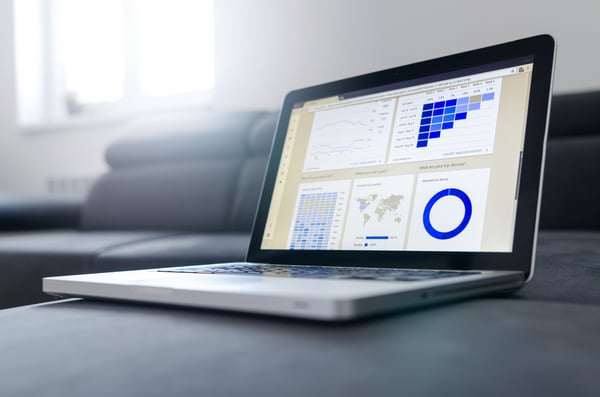In the ever-evolving world of big data, there is a constant stream of new data from various sources making leaps forward in the way humanity can identify trends. Whether it be analytics from financial data locating changes to the market, medical systems, through coordinated data identifying the outbreak of deadly diseases, or as simple as a social network detecting trends in conversation there is no denying that big data has changed the world forever. In this guest post, Taylor Welsh of AX Control provides insight on the evolution of big data analytics.

Photo Courtesy of Pexels
Guest Author: Taylor Welsh, Content Writer, AX Control
Prior to the world of Big Data, long before the computer was even a gleam in a dreamer’s eye, there existed the written record. The written record which has tracked human migration, crop records, tides, temperature and all manner of data which the information age takes for granted.
As the world moves into a “paperless society” big data analytics will evolve. Those records which have long been sitting in storehouses, Universities and Government archives, unused due to their physical nature can find new life in the Big Data age. Advances in scanning technology, and the computer's ability to identity written words from scanned data will be able to merge this data into new data, giving a larger picture of data.
An example of this is Medical Science. Governments and doctors of years past could track which years had which outbreaks of diseases and the general area. If a group of medical professionals or governments tracked the disease with detail, they could, perhaps identify the location of the outbreak and the cause. However, given the lack of real-time database searches of this data, and the varying quality of records, the answer to outbreaks could only be assumed in certain cases. However, one medical data moved into the online realm, information regarding these diseases could more quickly be corroborated and limit the outbreak to a smaller area, and the public notified, and precautions taken.
Another emerging of Big Data is the prediction of earthquakes. For thousands of years, earthquakes have struck seemingly out of nowhere, with the only records taken after the seismic event has occurred. In recent years, researchers at the University of Cambridge, using machine learning have been able to identify a “fingerprint” of earthquakes in the hopes of predicting an upcoming tremor. With this digitization of files, which has previously been only used on a piecemeal basis, it is now possible for seismologist to see the bigger picture of seismic regions, and hopefully prevent deaths from earthquakes.
Historical data in relation to social sciences will also continue to evolve. Human migration, although studied for hundreds of years will be studied in more precise detail as more records from local governments are available online. Questions of the how and why of human behavior in the event of human nature can be answered through the availability of online databases provided.
Furthermore, records regarding the decisions of government decisions can assist citizens become more knowledgeable in the why decisions are made, and how they themselves are affected by these decisions. Rather than the adage that states “history repeats itself”, governments and the people that live in those countries can understand the historical context those decisions from. Social Sciences students, as well as professors will be able to use this data to assist them in their studies of the field in a manner quicker than searching old archives for data when it can be searched via keyword.
Of course, the usefulness of Big Data is not only within the scientific realm. In the world of business, Big Data can help business better manage files and data.
Binders of files, which one occupied countless shelfs or spaces in paid storage, are now stored in cloud servers hosted offsite, saving on office space, and time in searching for data which required a full-time staff member to review. For companies which have operated for years based on paper, it is now easier than ever to compile the data from databases into a single location, review the data and use it for enhancing the customer experience, cutting down on unnecessary stock or streamline the work force.
In addition to these benefits, Business to Customer (B2C) organizations have the added benefit of knowing their customers and their buying habits better. Based on historic data, companies can review previous years of customer purchases and customer feedback and fine-tune their organizations decision making processes. For example, if a retailer attempts to reuse a theme or product for an upcoming campaign, the business will be able to review customer feedback from multiple databases such as call centers, mailed-in letters and other documentation to determine negative feedback from customers to prevent a repeat of similar events.
With the thousands of years of documented information prior to the information age, along with the incredible and new field of Big Data, science, governments, companies, consumers and the everyday citizen will be able to make better decisions, expand in the new dimensions, understand the behavior of generations and enhance their field all from analytics.
The opinions expressed here by 1871 guest writers are their own, not those of 1871. To learn more about AX Control follow this link.


